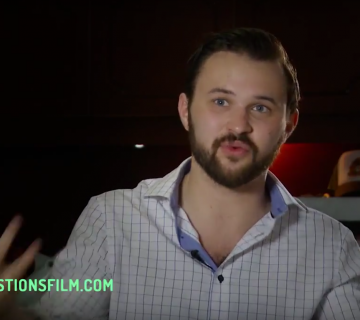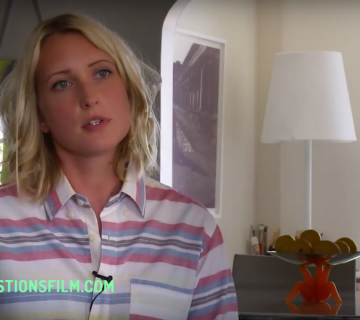If you are serious about branching out from the self-funded film business and into the world of investors, you have probably had moments of pulling out your hairs trying to figure out exactly how to go about it. We’ll break it down for you.
#1. The Script
It all starts with the story. Any investors will want to know that your script has gone through rewrites, readings, and has been given the professional blessings of several experienced directors, line producers and actors, effectively telling them that the final script is thoroughly tested and viable for production.
#2. The Shooting Schedule
Remember the line producer we just mentioned? When you find a line producer who sees the potential and marketability in your script, keep her number and start negotiating her fee. A good (read: experienced and with several credits) line producer will be able to take your script from words to numbers. Your line producer will break down the script, create a shooting schedule and subsequently a defacto production budget.
#3 The Production Budget
This is a puzzle you don’t want to put together on your own – and investors will want to know that the budget you present them with has been done by someone who knows exactly what they’re doing. Your line producer should completely describe all costs of production, including editing, writing, post-production, directing, producing and marketing. Check out this leaked budget for M. Night Shyamalan’s The Village – not that your first business plan should be in the $70 mio. range, but it should be detailed and professional.
#4 The Marketing Plan
Describe who the film is targeted and why they are gonna love it. Describe how you are gonna reach that target and which similar films has done the same thing successfully. Describe the cost and the timeline. Creativity is great, case studies and proven methods are better. Together they are unstoppable.
#5 The Distribution Plan
This is one of the most important parts of the business plan, but also one of the most tricky. After all, how is your film ever going to make any money if no one is going to see it? You need distribution and you need to describe exactly how you are going to get it. Describe how you can guarantee a theatrical release, PPV sales, cable rights, overseas rights, DVD rights, subsidiary sales and any other avenues of distribution you have planned for your film. Don’t sign a distribution deal before securing financing – it might turn out to work against you in the long run – but know exactly how, why, when and with whom you are going to secure one.
#6 The Cast and Crew
Now comes the fun stuff. Numbers alone are not going to make your film a success, you need a team that investors (and the general public) can believe in and rally behind, and this is your opportunity to showcase them. Though there may not be any actual contracts signed at this point, you would do well to get letters of interest from key crew members (director, cinematographer, production designer, composer) and include biographies, as well as samples of their previous work. Same thing goes for the key cast. Though not signed onto the project, you might be able to get letters of interest from the actors and actresses you believe would make this film everything it can be. In some (read: most) cases this will not be possible, but don’t fret. You can still include cast pictures, biographies, resumes and samples of previous work simply as examples of your vision. Don’t include A-list talent unless you have a letter of interest. Be realistic, be reasonable and be smart. Include cast fees and availability, if you can get it from their respective agents. Your investors are going to want to see that you can make your vision a reality without Jennifer Lawrence and Joaquin Phoenix, and that you can do it with a reasonable budget.
#7 The Visuals
Consider this the one-two punch of business plans. You start out presenting the facts and the plans and the market research, then you make those numbers come to life by attaching cast and crew. You have piqued your investor’s interest – now you start sweet-talking. Adding visual components to your business plan will make your project more tangible and give it a certain sex appeal – and we all know that sex sells, right? Include a couple of storyboarded scenes, pictures of locations, samples of your previous work and distinct visual style – even a professional film poster. You can add additional visuals and look-books as an addendum to the business plan so the numbers don’t get lost in flair, but make sure that what you are presenting – the complete business plan as it reads from start to finish – is a clear vision of your film.
#8 The Revenue Projections
Back to what most filmmakers might consider a bog of eternal stench, but which your potential investors will find just as sexy as the visuals described above: The revenue projections and rock-solid market analysis. Show how 15-20 recent films comparable to your own performed in theatrical release and on VOD/PPV. Be specific. Do lots and lots of research using resources like boxofficemojo.com, the-numbers.com and filmspecific.com. Go the extra mile and include revenue from product integration and state film production rebates. Companies like brand-inentertainment.com and Entertainment Partners will be useful resources.
#9 The Letter of Intent for a Completion Bond
If you have all of the above-mentioned sections sorted out and you have (tentatively) secured your locations, you can get a quote from a bonding agency. Your line producer will likely be the one to do this, as she will (hopefully) have done it before and have a working relationship with a good agency. Providing a letter of intent to get a completion bond will give your investors added piece of mind.
#10 The Letter of Intent for Insurance
Investors are not going to want to bet there money on anything but an (almost) sure thing. One way to eliminate risk is to have your film insured. Get a quote and a letter of intent to insure your film from a reputable insurance company. Again, this will be something your line producer can/should help you with.
#11 Wrap it up nicely and get it out the door
Rarely will you need to have a physical copy of your business plan handy, but make sure that your digital package looks and feels like the real thing. Check and double check spelling, grammar, formatting, graphics, alignment, colors – and then click “Save as PDF”. PDFs cost $0 to send, so make sure this gets into a lot of hands. If you attend film markets or social events where angel investors may be present, carry USB sticks with the complete package or an iPad with a presentation-ready package.
Please, please, please be aware that there are many hopeful filmmakers looking for easy money, so there are just as many scammers looking for the same. If you find yourself in negotiations with an interested investor, always require proof of funds and only ever go into business with investors that have a proven track record. If something is too good to be true, it’s because it is. Do your due diligence.









Join the Conversation →